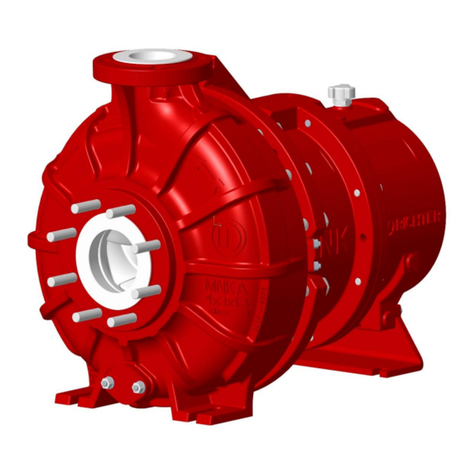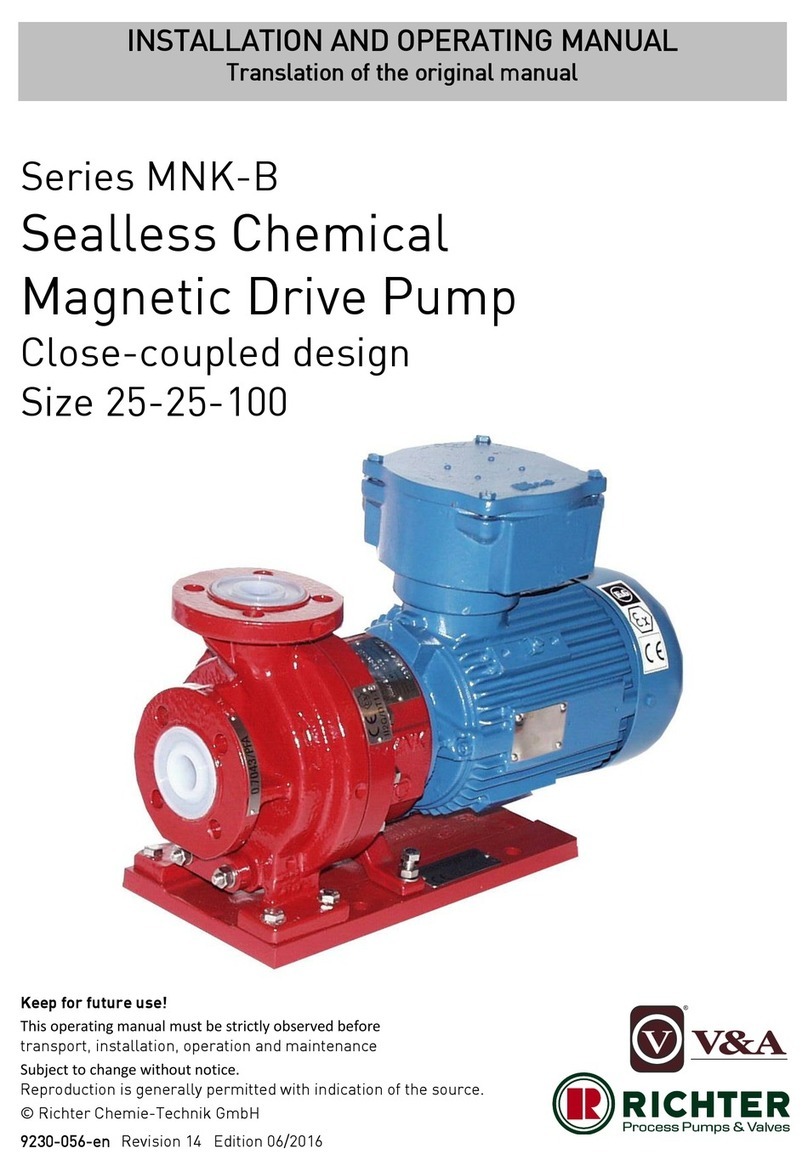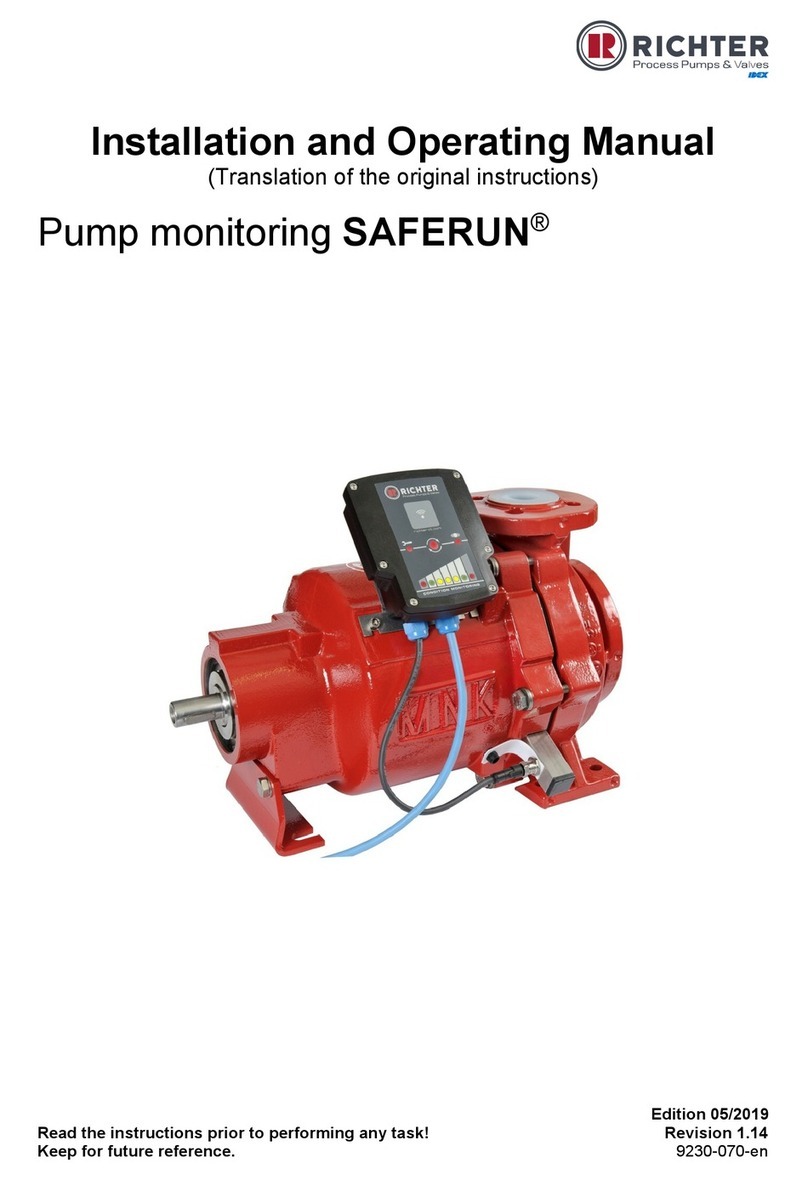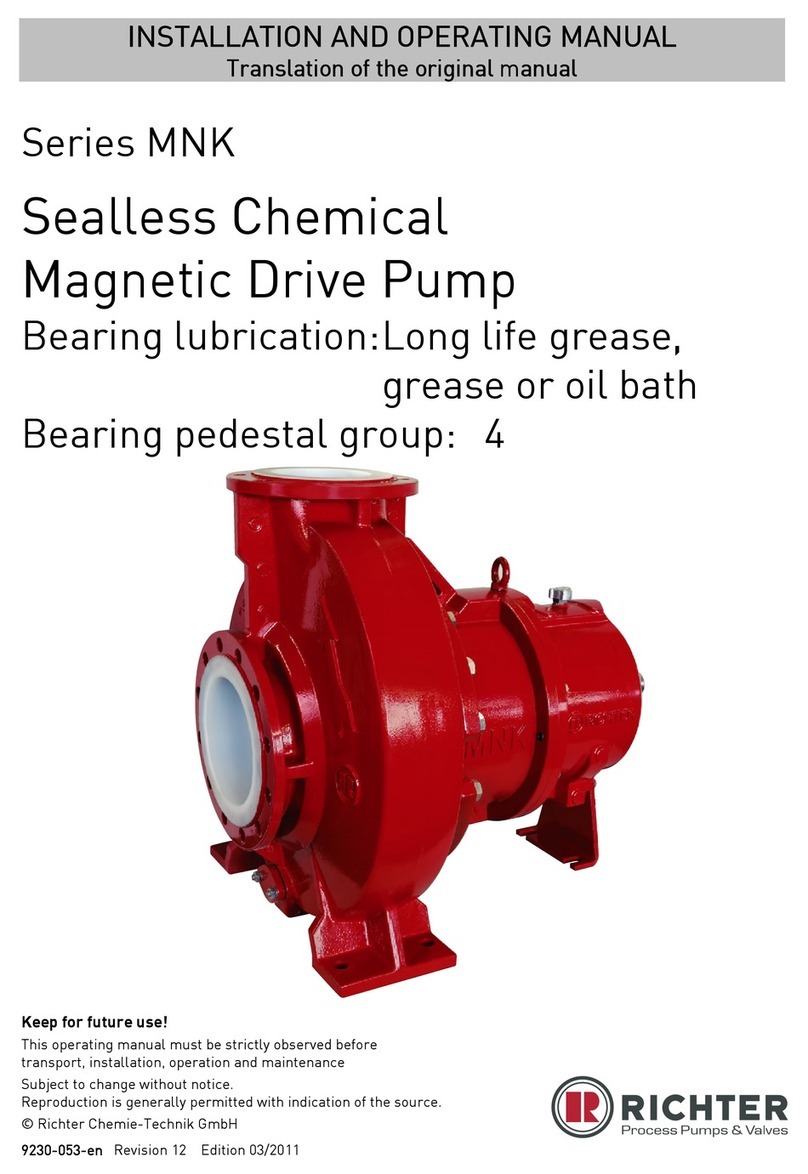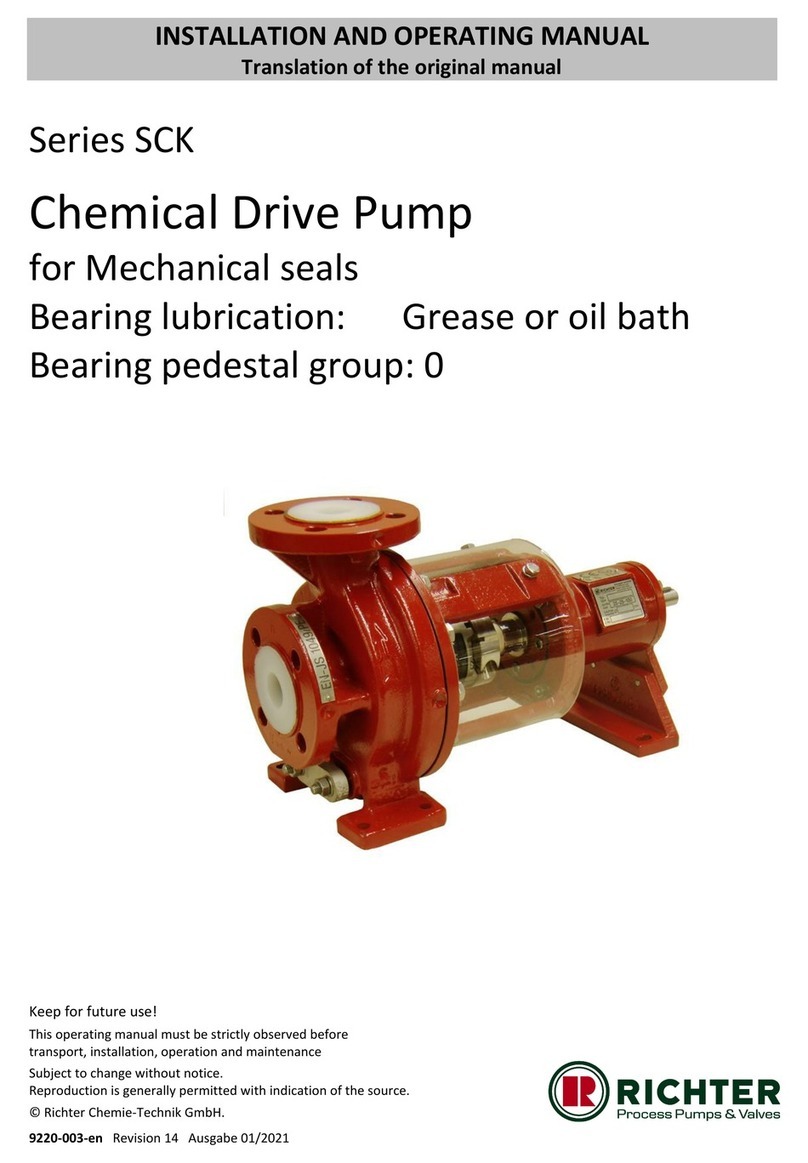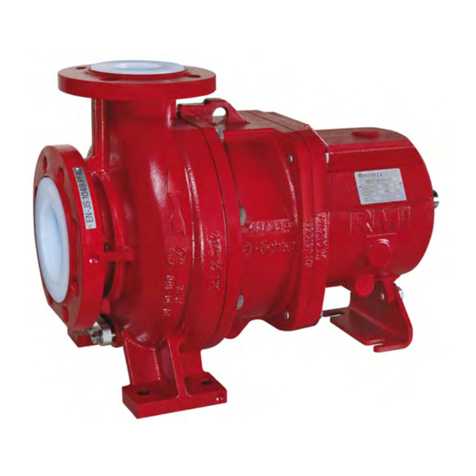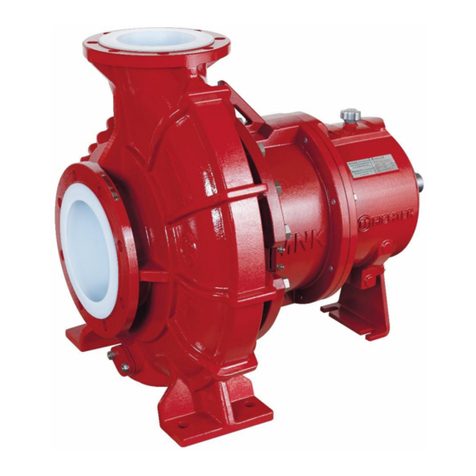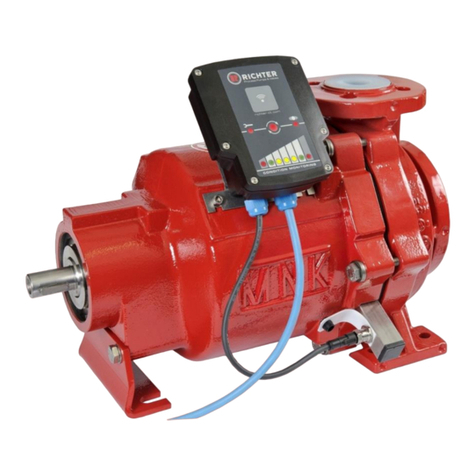Series RMI-B close-coupled design Page 2
9430-005-en Revision 03
TM 10456 Edition 06/2022
List of Contents
List of Contents................................................ 2
Relevant documents........................................ 3
1Technical data............................................. 3
1.1 Tightening torques...........................................4
1.2 Type plate, dry-running, ATEX and housing
markings ...........................................................4
1.3 Spare parts.......................................................4
2Safety ........................................................... 5
2.1 Intended use.....................................................5
2.2 Notes on safety for the customer / operator 6
2.3 Notes on safety for maintenance ..................6
2.4 Conversion work and production of spare
parts by the customer .....................................6
2.5 Improper operation.......................................... 6
2.6 Special requirements for explosion protection
6
2.6.1 Filling the unit........................................................7
2.6.2 Special operating conditions...............................7
2.6.3 Chargeable liquids................................................7
2.6.4 Identification..........................................................7
2.6.5 Check of the direction of rotation........................7
2.6.6 Mode of operation of the pump...........................7
2.6.7 Temperature limits................................................8
2.6.8 Maintenance..........................................................8
2.6.9 Electric peripheral equipment..............................8
3Transport, storage and disposal............... 9
3.1 Return consignments......................................9
3.2 Disposal ............................................................9
4Product description.................................. 10
5Installation................................................. 11
5.1 Safety regulations.......................................... 11
5.2 Installation of pump/unit................................11
5.3 Alignment of pump - motor...........................11
5.4 Piping ..............................................................11
5.4.1 Nominal size........................................................11
5.4.2 Nozzle loads........................................................12
5.4.3 Suction line..........................................................12
5.4.4 Supply lines.........................................................12
5.4.5 Discharge line .....................................................12
5.4.6 Venting and evacuating.....................................12
5.5 Pipe fittings.....................................................12
5.6 Monitoring facilities........................................13
5.7Drive................................................................ 13
5.8 Electric connection........................................13
6Commissioning / Shutdown.................... 14
6.1 Initial commissioning .....................................14
6.1.1 Filling the pump housing....................................14
6.1.2 Start-up.................................................................14
6.2 Operating limits ..............................................14
6.2.1 Abrasive media....................................................14
6.2.2 Min./max. flow rate..............................................14
6.3 Shutdown ........................................................15
6.4 Restarting........................................................15
6.5 Improper operations and their consequences
(examples) ......................................................15
7Maintenance...............................................16
7.1 Safety related screw connections................16
7.2 Motor................................................................16
7.3 Cleaning..........................................................16
7.4 Stand-by pumps.............................................16
7.5 Notes on dismantling.....................................16
7.5.1 Protective clothing...............................................16
7.5.2 Magnetic fields ....................................................16
7.5.3 Changing the motor............................................16
7.6 Dismantling.....................................................17
7.6.1 Removing adapter..............................................17
7.6.2 Dismantling motor, adapter and drive magnet
assembly..............................................................17
7.6.3 Dismantling the slide-in unit...............................17
7.6.4 Dismantling housing/shaft spider......................18
7.7 Notes on assembly........................................18
7.7.1 Table for target dimension Z..............................19
7.8 Assembly.........................................................20
7.8.1 Assembly of housing / shaft spider...................20
7.8.2 Assembly of slide-in unit....................................20
7.8.3 Assembly of drive unit........................................20
7.8.4 Final assembly ....................................................21
7.9 Tests................................................................21
8Malfunctions..............................................22
9Sectional drawing......................................23
9.1 Legend.............................................................23
9.2 RMI-B in close-coupled design...................24
10 Assembly aids...........................................25
10.1 Boring templates............................................25
10.2 Pull-off device for plain bearing bushes......25
10.3 Dismounting device impeller - rotor.............25
10.4 Insertion tool for shaft spider........................26
10.5 Insertion tool for rotor circlip.........................26
